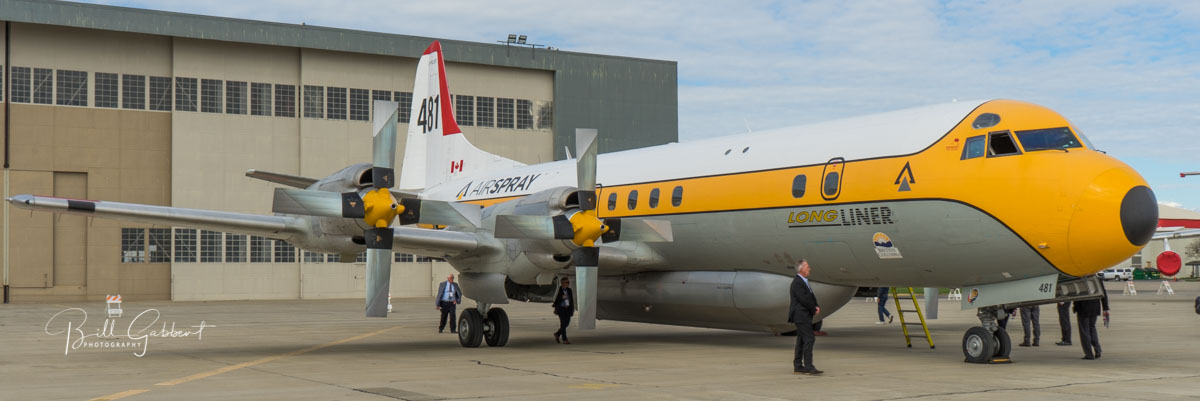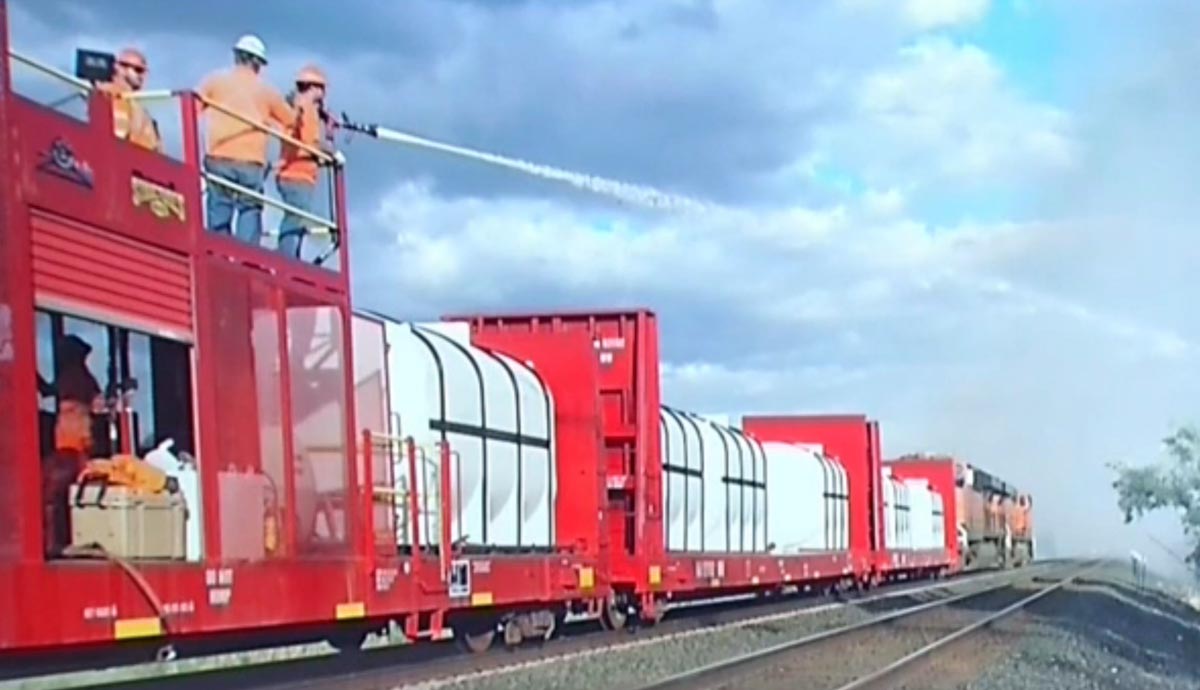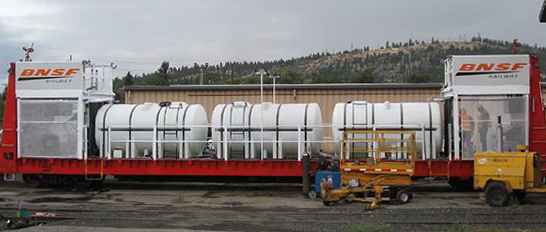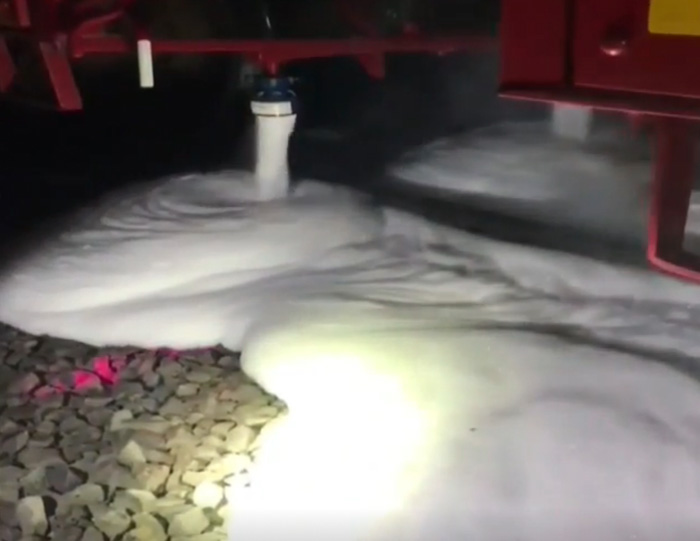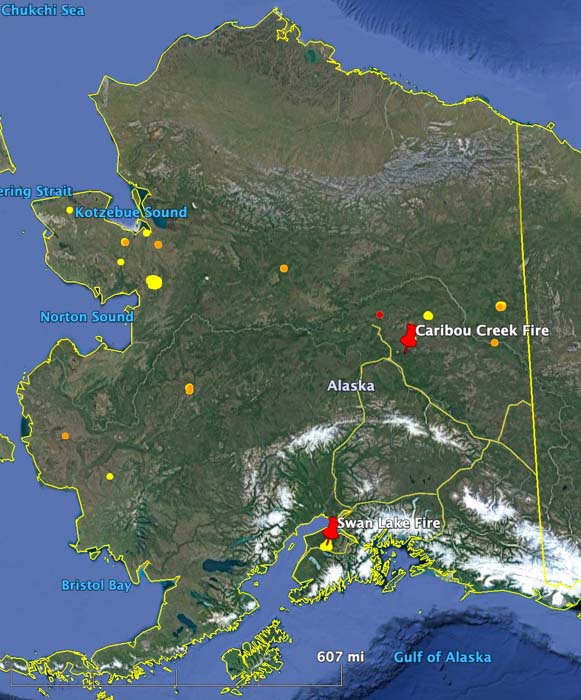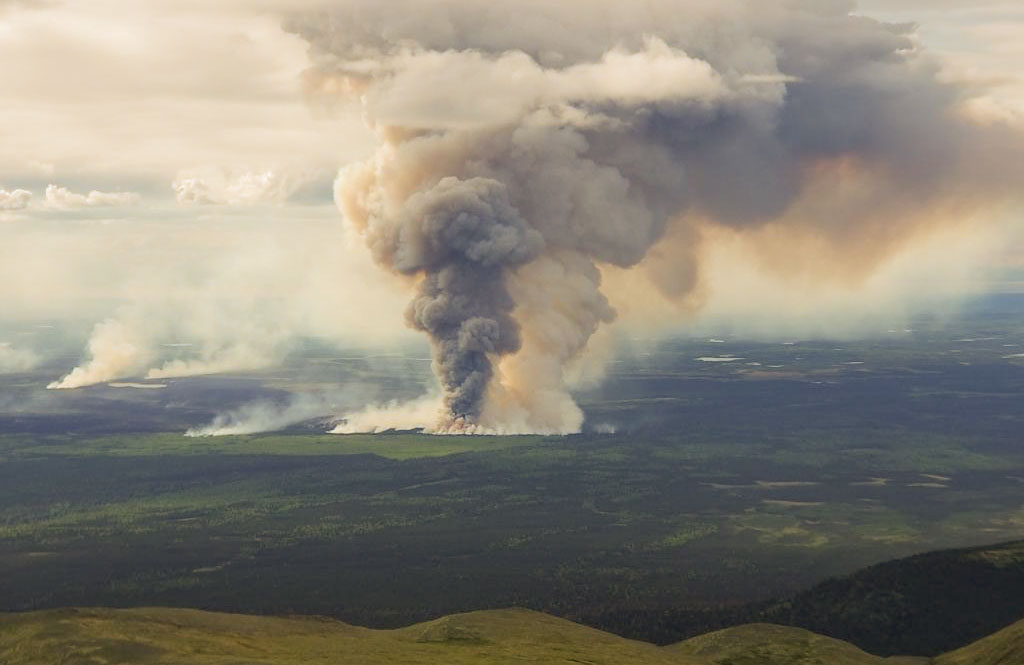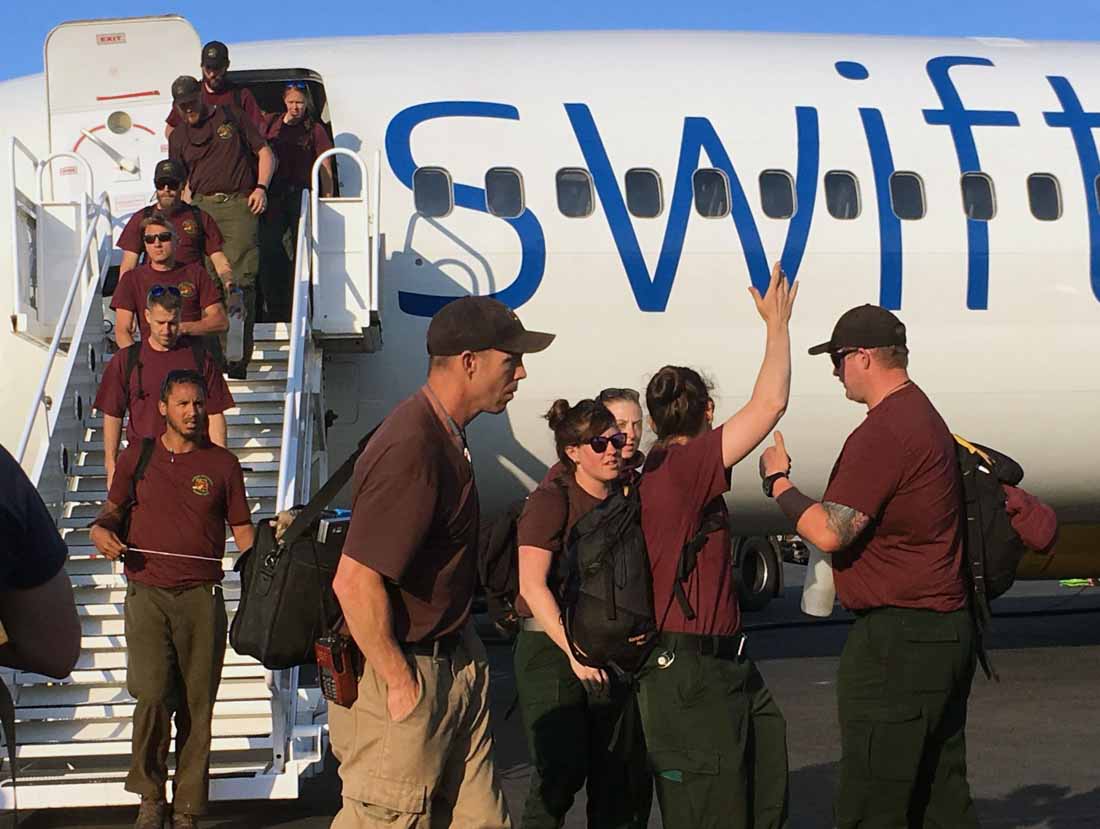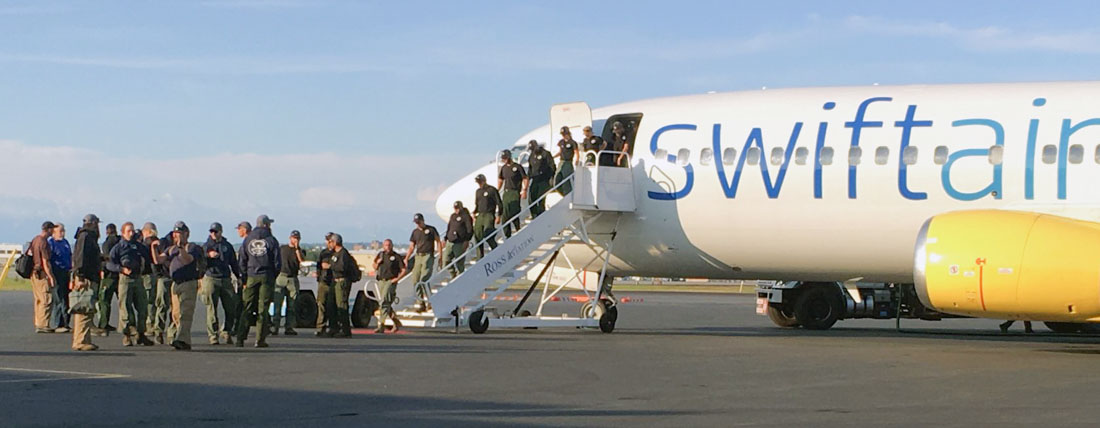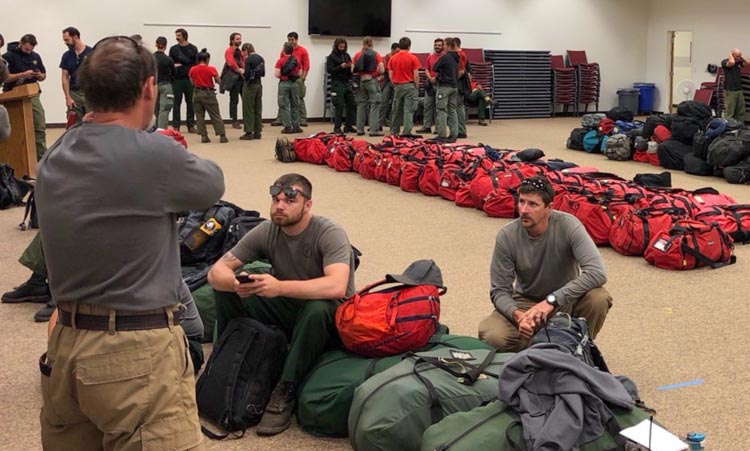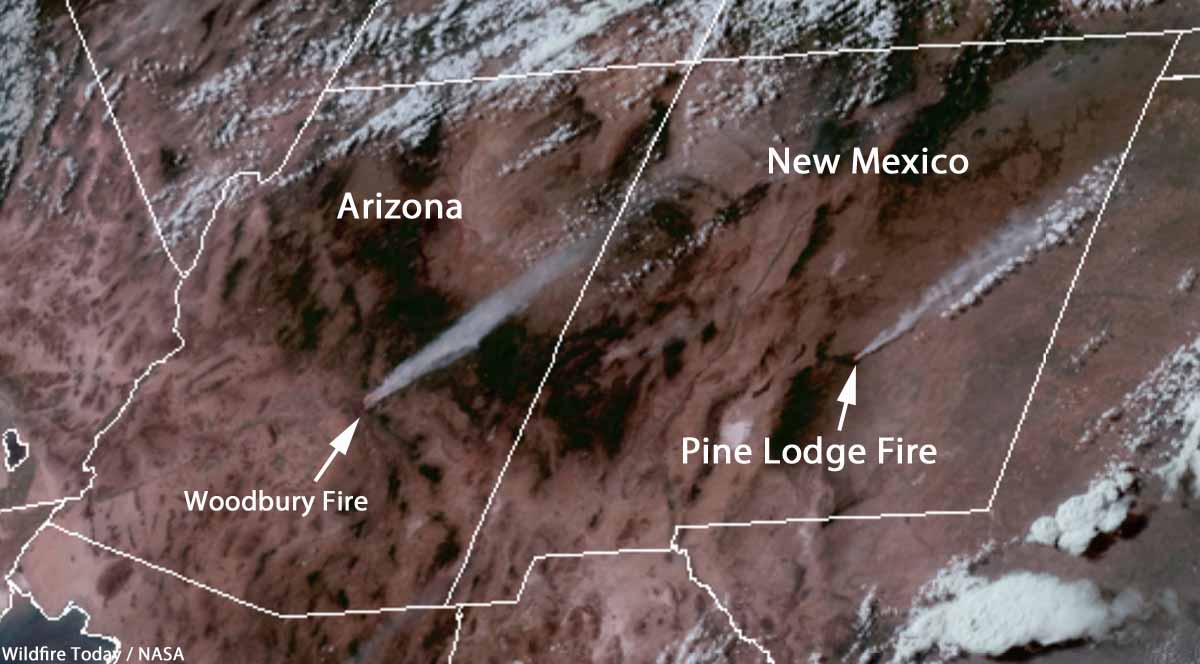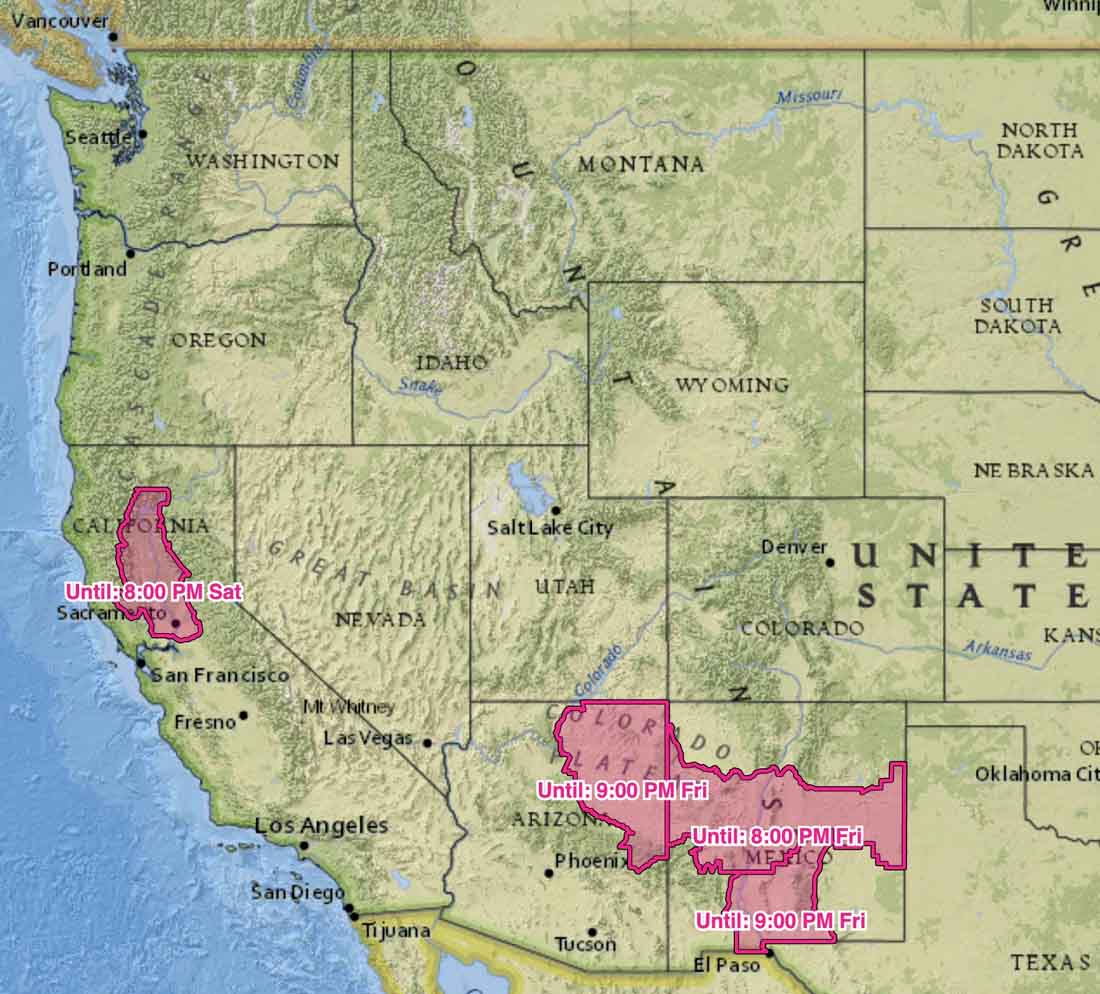
(Above, map of the Woodbury Fire, Saturday night)
(Originally published at 11:11 a.m. MDT June 23, 2019)
The Woodbury Fire was less active Saturday than it had been in previous days, which allowed the construction of direct fireline by hotshot crews, but it still produces large amounts of smoke. The southeast side of the fire where retardant was dropped along Sawtooth Ridge continues to hold. Crews are performing structure protection around the community of Top of the World, Pinto Valley Mine, Carlota Mine, and other infrastructure.
(To see all articles on Wildfire Today about the Woodbury Fire, including the most recent, click HERE.)
The fire has burned 96,307 acres east of Phoenix and south of Theodore Roosevelt Lake.
Firing operations have been underway along the Highway 188 corridor from Roosevelt to Spring Creek to limit fire spread should it progress further northeast. That line is holding well.
Additional firing occurred at Tonto National Monument ahead of the advancing wildfire as a precautionary measure. The Monument is two air miles southeast of Roosevelt. There has been no apparent damage to the cliff dwellings and other structures.
Resources assigned to the fire include 16 hand crews, 49 fire engines, and 8 helicopters, for a total of 905 personnel. This is a slight reduction in personnel over the last 24 hours, probably due to the eastern one-third of the fire having been relatively quiet for several days.
State Highway 88 is closed from milepost 213 at Tortilla Flat to State Highway 188 at Theodore Roosevelt Dam. Also, State Highway 188 is closed from its junction with State Highway 88, east to the junction of State Highway 288 (the Young Road). Highway 288 remains open.
AFMA wildland medics, Aaron and Mac, working the #Woodburyfire as Linemedics. These medics are assigned with fire crews working the “line” for quick treatment and transport from any medical incidents that may arise. Stay Safe everyone.#azfiremedical pic.twitter.com/PUJoFlHSVQ
— AZ Fire & Medical (@AZFireAuthority) June 23, 2019
Latest photos of the #WoodburyFire that has burned ~66,000 acres in the Superstition Mountains east of Phoenix, AZ. 42% contained. #AZFire pic.twitter.com/fJkSoRBaPg
— Chopperguy (@chopperguyhd) June 21, 2019
The #WoodburyFire has currently burned nearly 80,000 acres and has the potential to become the 6th largest wildfire in Arizona history. pic.twitter.com/hlwuG4LHj5
— Anton Delgado (@antonldelgado) June 23, 2019
Timelapse of #WoodburyFire from above Roosevelt Lake #tontoforest @TontoForest @BLMAZFire #AZHighways @BLMNational pic.twitter.com/hhBbQZDHJl
— Don Lawrence Photo (@Don_tlr) June 23, 2019



